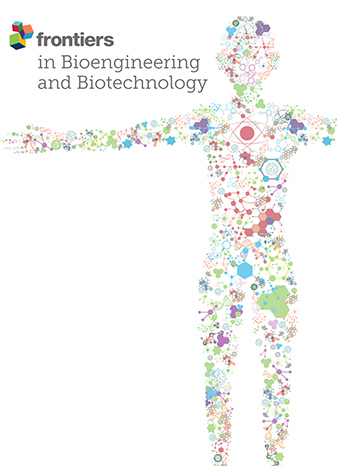Effects of different sensory integration tasks on the biomechanical characteristics of the lower limb during walking in patients with patellofemoral pain
IF 4.3
3区 工程技术
Q1 BIOTECHNOLOGY & APPLIED MICROBIOLOGY
引用次数: 0
Abstract
PurposeThis study aimed to analyze the biomechanical characteristics of the lower limb in patients with patellofemoral pain (PFP) while walking under different sensory integration tasks and elucidate the relationship between these biomechanical characteristics and patellofemoral joint stress (PFJS). Our study’s findings may provide insights which could help to establish new approaches to treat and prevent PFP.MethodOverall, 28 male university students presenting with PFP were enrolled in this study. The kinematic and kinetic data of the participants during walking were collected. The effects of different sensory integration tasks including baseline (BL), Tactile integration task (TIT), listening integration task (LIT), visual integration task (VIT) on the biomechanical characteristics of the lower limb were examined using a One-way repeated measures ANOVA. The relationship between the aforementioned biomechanical characteristics and PFJS was investigated using Pearson correlation analysis.ResultsThe increased hip flexion angle (不同感觉统合任务对髌股关节疼痛患者行走时下肢生物力学特征的影响
目的 本研究旨在分析髌骨股骨关节疼痛(PFP)患者在不同感觉统合任务下行走时下肢的生物力学特征,并阐明这些生物力学特征与髌骨股骨关节应力(PFJS)之间的关系。我们的研究结果可能会提供有助于建立治疗和预防 PFP 的新方法的见解。收集了参与者行走时的运动学和动力学数据。采用单因素重复测量方差分析法研究了不同感觉统合任务(包括基线(BL)、触觉统合任务(TIT)、听觉统合任务(LIT)和视觉统合任务(VIT))对下肢生物力学特征的影响。结果 PFP 患者在进行 VIT 时表现出的髋关节屈曲角增大(P = 0.016)、膝关节伸展力矩增大(P = 0.047)、步长减小(P < 0.001)、膝关节屈曲角减小(P = 0.010)和步幅减小(P < 0.001)与髌股关节应力增大有关。结论VIT显著影响了PFP患者行走时的下肢运动模式。具体来说,这项任务导致的髋关节屈曲角度增大、膝关节伸展力矩增大、膝关节屈曲角度减小和步幅减小可能增加了 PFJS,并可能导致 PFP 复发。同样,PFP 患者在接触 TIT 和 LIT 时往往会表现出步幅减小。这可能是 TIT 和 LIT 导致 PFJS 增加的主要诱因。
本文章由计算机程序翻译,如有差异,请以英文原文为准。
求助全文
约1分钟内获得全文
求助全文
来源期刊

Frontiers in Bioengineering and Biotechnology
Chemical Engineering-Bioengineering
CiteScore
8.30
自引率
5.30%
发文量
2270
审稿时长
12 weeks
期刊介绍:
The translation of new discoveries in medicine to clinical routine has never been easy. During the second half of the last century, thanks to the progress in chemistry, biochemistry and pharmacology, we have seen the development and the application of a large number of drugs and devices aimed at the treatment of symptoms, blocking unwanted pathways and, in the case of infectious diseases, fighting the micro-organisms responsible. However, we are facing, today, a dramatic change in the therapeutic approach to pathologies and diseases. Indeed, the challenge of the present and the next decade is to fully restore the physiological status of the diseased organism and to completely regenerate tissue and organs when they are so seriously affected that treatments cannot be limited to the repression of symptoms or to the repair of damage. This is being made possible thanks to the major developments made in basic cell and molecular biology, including stem cell science, growth factor delivery, gene isolation and transfection, the advances in bioengineering and nanotechnology, including development of new biomaterials, biofabrication technologies and use of bioreactors, and the big improvements in diagnostic tools and imaging of cells, tissues and organs.
In today`s world, an enhancement of communication between multidisciplinary experts, together with the promotion of joint projects and close collaborations among scientists, engineers, industry people, regulatory agencies and physicians are absolute requirements for the success of any attempt to develop and clinically apply a new biological therapy or an innovative device involving the collective use of biomaterials, cells and/or bioactive molecules. “Frontiers in Bioengineering and Biotechnology” aspires to be a forum for all people involved in the process by bridging the gap too often existing between a discovery in the basic sciences and its clinical application.
文献相关原料
| 公司名称 | 产品信息 | 采购帮参考价格 |
|---|
 求助内容:
求助内容: 应助结果提醒方式:
应助结果提醒方式:


